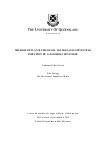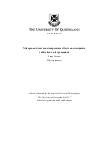Connect with Massey University
Contact this content partner to get more information about this item.
Study of nitrogen loss pathways in oil palm (Elaeis guineensis Jacq.) growing agro-ecosystems on volcanic ash soils in Papua New Guinea : a thesis presented in partial fulfilment of the requirements for the degree of Doctor of Philosophy in Soil Science at Massey University, Palmerston North, New Zealand
- Description:
- Oil palm is the largest national crop produced in Papua New Guinea. It is grown on over 80,000 ha of young volcanic soils in five Provinces, employs over 12,000 workers and uses >12,000 tonnes of fertiliser to offset nitrogen deficiency which is the most limiting factor to production. Oil palms strip out 160 - 200 kg N ha-1 yr-1 from the soil. Nitrogen fertilisers account for 60-70 % of all var...
- Display date:
- 2007
- Location:
- Papua New Guinea
- Format:
- Thesis
- Collections:
- Massey Research Online
- Publisher:
- Massey University
- Content partner:
- Massey University
- Availability:
- Not specified
-
Copyright status: All rights reservedFind out more about what you are able to do with this itemThis item is all rights reserved, with means you'll have to get permission from Massey University before using it. For more information, please see our use and reuse page.More informationMassey University has this to say about the rights status of this item:
The Author
What can I do with this item?Non-infringing useNZ copyright law does not prevent every use of a copyright work, and this item may be hosted by an international institute or organisation. You should consider what you can and cannot do with a copyright work.No sharingYou may not copy and/or share this item with others without further permission. This includes posting it on your blog, using it in a presentation, or any other public use.No modifyingYou are not allowed to adapt or remix this item into any other works.No commercial useYou may not use this item commercially.
Related items
Welcome and warm Pasifik greetings
The information on this site has been gathered from our content partners.
The names, terms, and labels that we present on the site may contain images or voices of deceased persons and may also reflect the bias, norms, and perspective of the period of time in which they were created. We accept that these may not be appropriate today.
If you have any concerns or questions about an item, please contact us.

